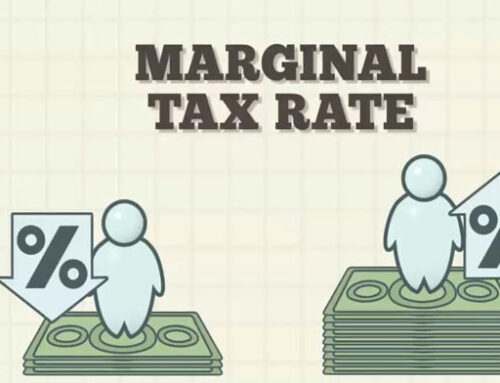“Section Eighty-What-Who?!” – A Closer Look at the Section 85 Rollover
The Section 85 rollover might sound unfamiliar, but it can be an essential tax deferral tool for various scenarios involving company restructuring, tax planning, and creditor proofing. In this blog post, we’ll explore the basics of the Section 85 rollover and focus on two common scenarios where it is frequently applied.
Background: A Simplified Overview
The Section 85 rollover allows the tax-deferred transfer of assets with built-in gains from one company to another, such as from a sole proprietorship to a corporation. This mechanism, facilitated through CRA’s T2057 form, enables assets to be moved to a Canadian Corporation without triggering immediate tax consequences. Without this provision, transferring assets between companies could lead to taxable events, making the Section 85 rollover a valuable option for certain business moves.

Scenario 1: Sole Proprietorship to Corporation
One common use of the Section 85 rollover involves successful sole proprietors seeking to incorporate their businesses for tax benefits. Before proceeding with the rollover, a careful assessment of the sole proprietorship’s assets is necessary to determine if the Section 85 rollover is appropriate. In this scenario, assets are typically transferred from the sole proprietorship to the corporation at fair market value (FMV), but the election is made at cost. The individual (shareholder) then receives shares from the corporation equal to the FMV of the assets transferred. This transfer incurs no immediate personal tax consequences, as any tax liability arises only when the shares or assets of the corporation are sold in the future.
Scenario 2: Introducing a Holding Company
Business owners often incorporate their operating companies (opcos), and hold shares personally. Over time, they might realize the benefits of having a holding company (holdco) for tax planning and creditor proofing purposes. Introducing a holdco allows for:
- Eligibility for the capital gains exemption.
- Transferring funds from the opco to the holdco for asset protection.
In this scenario, the holdco needs to be incorporated, and the Section 85 rollover involves transferring shares from the opco to the holdco. The shareholder then receives shares from the holdco in return. This arrangement results in the shareholder owning shares of the holdco, which, in turn, owns shares of the opco. The opco can now transfer funds to the holdco through tax-free dividends, contributing to creditor proofing and meeting capital gains exemption criteria.

Proceed with Caution: Consult a Tax Accountant
While the 85 rollover is a powerful tool, it’s essential to remember that this blog post provides only a high-level overview. The rollover can become more intricate and unique depending on the specific circumstances involved. Therefore, it is crucial to seek advice from a tax accountant before proceeding with any 85 rollovers. Professional guidance ensures that you fully understand the technical details and make informed decisions that align with your business objectives.
A Valuable Tool for Canadian Businesses
The Section 85 rollover is widely used in the Canadian business landscape, empowering growing companies to maneuver and pivot without immediate tax consequences. However, to harness its benefits successfully, thorough planning and expert advice are indispensable. Always consult a tax accountant to ensure a seamless and compliant 85 rollover, tailored to your specific needs.
Navigating the Canadian tax landscape can be a complex task, especially when it comes to transactions involving the sale or transfer of business assets. The Section 85 rollover provision in the Income Tax Act is a crucial tool that can offer significant tax advantages in such situations. In this blog post, we will demystify the Section 85 rollover, explaining its purpose, benefits, and how it works.
Also Read: Are tipping subject to taxation in Canada?
Understanding the Section 85 Rollover
Let’s start with the basics. What exactly is the Section 85 rollover? This section of the Income Tax Act allows for the tax-deferred transfer of property to a corporation in exchange for shares. We’ll delve into the specifics of how this works and why it’s a valuable option.
Benefits of the Section 85 Rollover
Why should individuals and business owners consider utilizing the Section 85 rollover? This section explores the various tax benefits and advantages that come with this provision, including deferring capital gains taxes and preserving wealth during business transitions.
Eligibility and Criteria
Not all transactions qualify for the Section 85 rollover, and there are specific criteria that must be met. This section outlines the eligibility requirements, including the types of property that can be transferred and the conditions that must be satisfied.
Step-by-Step Guide
Understanding the mechanics of the 85 rollover is essential. In this part of the blog, we provide a step-by-step guide to walk you through the process, from determining eligibility to completing the required documentation.
Common Pitfalls to Avoid
Like any tax provision, there are potential pitfalls and challenges associated with the Section 85 rollover. We highlight some common mistakes and misconceptions to help you steer clear of trouble.
Practical Applications
To illustrate the real-world utility of the 85 rollover, we delve into practical scenarios where business owners and investors might consider using this tax planning strategy. These examples can provide valuable insights into how it can be applied to your unique situation.
Comparing Alternatives
The 85 rollover is not the only option for structuring business asset transfers. We compare it to other tax planning strategies, such as this section, to help you make informed decisions.
Also Read: Are Gifts To Customers And Business Associates Deductible Expenses?
Seeking Professional Advice
While this blog post aims to demystify the 85 rollover, it’s crucial to recognize that tax law is intricate and ever-evolving. Consulting with a tax professional or accountant who specializes in Canadian tax law is always a prudent step when considering complex transactions.
Conclusion
The 85 rollover is a valuable tool for Canadian taxpayers seeking to optimize their tax strategies during business transactions. By understanding its purpose, benefits, and eligibility criteria, you can make informed decisions that preserve your wealth and minimize tax liabilities. While it may seem complex, demystifying this tax provision is the first step towards harnessing its full potential for your financial success.
Recent Posts
FAQ
Why is seeking professional guidance important, and what benefits does it offer in making business decisions?
Seeking professional guidance is important because it ensures that you fully understand the technical details and implications related to your business decisions. Professional advisors, such as accountants, lawyers, or consultants, have expertise in their respective fields, which allows them to provide valuable insights and recommendations tailored to your specific business objectives. Their knowledge and experience help you navigate complex issues, avoid potential pitfalls, and make well-informed choices that can positively impact your business's success and growth.





